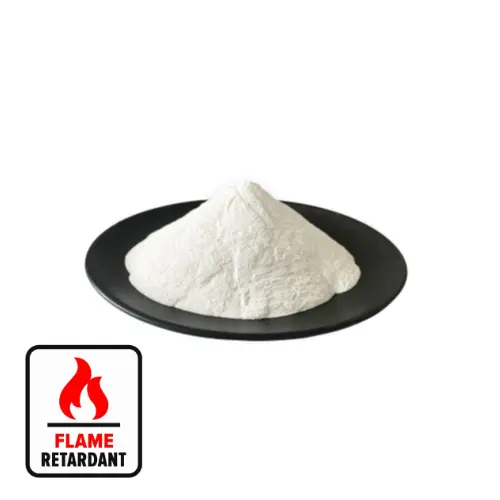Hebei Messi Biology Co., Ltd.stated that magnesium hydroxide is also known as caustic magnesite, light burnt magnesia, etc. The suspension of magnesium hydroxide in water is called milk of magnesia hydroxide, or milk of magnesia for short. Magnesium hydroxide is a new type of filled flame retardant. It releases bound water during thermal decomposition and absorbs a large amount of latent heat to reduce the surface temperature of the synthetic materials it fills in the flame. It has the ability to inhibit polymer decomposition and damage all materials. The combustible gas produced acts as a cooling agent.
Magnesium hydroxide is recognized as an excellent flame retardant in the rubber and plastics industry with the triple functions of flame retardant, smoke suppression and filling. It is widely used in rubber, chemicals, building materials, plastics and electronics, unsaturated polyester and paints, coatings and other polymer materials. Especially for the flame-retardant, smoke-eliminating and anti-static coating of mining air duct coatings, PVC whole-core conveyor belts, flame-retardant aluminum-plastic panels, flame-retardant tarpaulins, PVC wire and cable materials, mining cable sheaths, and cable accessories. , can replace aluminum hydroxide and has excellent flame retardant effect.

Magnesium hydroxide has better smoke suppression effect than similar inorganic flame retardants. Magnesium hydroxide does not emit harmful substances during production, use and disposal, and it can also neutralize acidic and corrosive gases produced during combustion. When used alone, the dosage is generally 40% to 60%. It has good compatibility with base material resin and is an excellent flame retardant for thermoplastic resins and rubber products. It is often used as an additive flame retardant or flame retardant filler in adhesives. The reference dosage is 20 to 40 parts. Industrially used to manufacture magnesium salts, activated magnesium oxide, pharmaceuticals, fine ceramics, insulation materials, sugar refining, flue gas desulfurizers, oil anti-corrosion additives, acid-containing wastewater neutralizers, color TV picture tube cone glass coatings, etc.
The environmental uses of magnesium hydroxide will continue to stimulate demand, accounting for 47.1% of total revenue in 2016. The application of flame retardants will achieve high growth of 4.4%, accounting for 21.8% of overall revenue. In addition, the application of magnesium hydroxide as a neutralizing agent in the pulp and paper industry will be strengthened.
According to research by Hebei Messi Biology Co., Ltd., the global demand for magnesium hydroxide will reach 943,300 tons in 2016, a year-on-year increase of 4.6%. China is the largest producer, consumer and exporter of magnesium hydroxide, with total revenue reaching US$143.4 million, compared with US$133 million in 2015. Outlook: From 2016 to 2026, the global magnesium hydroxide market is expected to have a compound annual growth rate of 5.8%, and total revenue will reach US$1 billion. Asia Pacific will continue to remain the largest market, with a revenue share of 38.1% in 2026.
